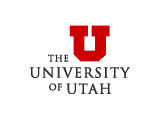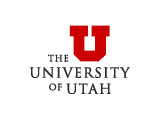Filters: School Or College: "College of Social & Behavioral Science" Collection: "ir_uspace" Department: "Anthropology"
| Creator | Title | Description | Subject | Date | ||
|---|---|---|---|---|---|---|
| 26 |
 |
Hawkes, Kristen | Why hunter-gatherers work: An ancient version of the problem of public goods | From the abstract: People who hunt and gather for a living share some resources more widely than others. A favored hypothesis to explain the differential sharing is that giving up portions of large, unpredictable resources obligates others to return shares of them later, reducing everyone's variance... | Hunter-gatherer societies; Public goods | 2001-08 |
| 27 |
 |
Hawkes, Kristen | Food sharing among Ache hunter-gatherers of Eastern Paraguay | Empirical research on food sharing among hunter-gatherers should provide critical data for evaluating both the possible role of food sharing in hominid evolution and the question of how such behavior could be selected. | Hunter-gatherers; Ache; Paraguay; Anthropology | 1988-02 |
| 28 |
 |
Rogers, Alan R. | Model of kin-structured migration | When individuals disperse from one local group to another, they often do so in the company of relatives. This is known as "kin-structured migration," and its effect on genetic population structure is investigated here. It is shown that when migration is kin-structured, the ratio of between- to with... | Fission; Mobility; Population | 1987 |
| 29 |
 |
O'Rourke, Dennis H. | Spatial and temporal stability of mtDNA haplogroup frequencies in native North America | Mitochondrial DNA lineage frequencies in prehistoric Aleut, eastern Utah Fremont, Southwestern Anasazi, Pyramid Lake, and Stillwater Marsh skeletal samples from northwest Nevada and the Oneota of western Illinois are compared with those in 41 contemporary aboriginal populations of North America. T... | Mitochondrial DNA; Lineage variation; Haplogroup assignment | 2000 |
| 30 |
 |
Bell, Adrian | Driving factors in the colonization of Oceania: developing island-level statistical models to test competing hypotheses (Electronic Supporting Material) | To test the model specification and fitting algorithms, we simulated data using randomly generated parameters, settlement chronology, and accessibility matrix for N islands. Using the function optim in R, we found the maximum likelihood estimates and compared them with the "true" parameter values us... | Oceania; Archaeology; Settlement; Statistical models | 2015-01-23 |
| 31 |
 |
Codding, Brian | Codding, Brian: Living outside the box: An updated perspective on diet breadth and sexual division of labor in the Prearchaic Great Basin [Author's Manuscript] | A tremendous amount has been learned about the Prearchaic (before 9000 BP) Great Basin since we advocated a perspective of sexual division of labor based on Human Behavioral Ecology a decade ago. Many investigators have taken our advice and a few have challenged our assumptions and inferences. One o... | 2014-01-01 | |
| 32 |
 |
Vernon, Kenneth B. | Prearchaic land use in Grass Valley, Nevada: A novel statistical implementation of optimal distribution modeling | Using Prearchaic (PA) sites in Grass Valley, NV (Fig. 1), this project investigates (i) environmental factors driving variation in PA settlement and (ii) geomorphological factors driving variation in PA surface visibility. Building on previous research [1,2], we evaluate variables using Ideal Free D... | Prearchaic - Great Basin; Ideal Free Distribution; Maximum Entropy | 2018 |
| 33 |
 |
O'Rourke, Dennis H. | Biochemical heterozygosity and morphologic variation in a colony of papio hamadryas hamadryas baboons | This analysis examines the association between genetic heterozygosity and individual morphologic variation in a captive population of Papio hamadryas hamadryas consisting of 403 juveniles and adults. The population structure of the colony was artificially generated and maintained and is thus rigoro... | Population genetics; Polygenic; Inbreeding | 1994 |
| 34 |
 |
Rogers, Alan R. | Quantitative genetics of sexual dimorphism in human body size | A classical data set is used to predict the effect of selection on sexual dimorphism and on the population means of three characters--stature, span, and cubit--in humans. Given selection of equal intensity, the population means of stature and of cubit should respond more than 60 times as fast as d... | Societies; Selection; Species | 1992 |
| 35 |
 |
Hawkes, Kristen | Some current ideas about the evolution of the human life history | Human life history is characterised by a long juvenile period (weaning to reproductive maturity), and a long post-reproductive lifespan in females. How do we explain the differences between our nearest relatives, the great apes, and ourselves? This chapter summarises some recent attempts to use l... | Human life history; Fertility; Apes; Juvenile period | 1999 |
| 36 |
 |
Harpending, Henry C.; Jorde, Lynn B. | Culture creates genetic structure in the Caucasus: autosomal, mitochondrial, and Y-chromosomal variation in Daghestan | Near the junction of three major continents, the Caucasus region has been an important thoroughfare for human migration. While the Caucasus Mountains have diverted human traffic to the few lowland regions that provide a gateway from north to south between the Caspian and Black Seas, highland populat... | Caucasus; Haplogroups; Autosomal variation; Mitochondrial variation; Y-chromosomal variation; Endogamy; Avar; Dargin; Kubachi; Culture | 2008 |
| 37 |
 |
Loeb, Laurence D. | Sanandaj Rezaiyeh (reel six, side two) | This is an audio recording made by the author. We are in the process of gathering complete metadata from the author. | ||
| 38 |
 |
Loeb, Laurence D. | Sanandaj Rezaiyeh (reel six, side one) | This is an audio recording made by the author. We are in the process of gathering complete metadata from the author. | ||
| 39 |
 |
Loeb, Laurence D. | Sanandaj (reel five, side two) | This is an audio recording made by the author. We are in the process of gathering complete metadata from the author. | ||
| 40 |
 |
Loeb, Laurence D. | Sanandaj (reel five, side one) | This is an audio recording made by the author. We are in the process of gathering complete metadata from the author. | ||
| 41 |
 |
McElreath, Richard | In search of homo economicus: behavioral experiments in 15 small scale societies | Recent investigations have uncovered large, consistent deviations from the predictions of the textbook representation of Homo economicus One problem appears to lie in economists' canonical assumption that individuals are entirely self-interested: in addition to their own material payoffs, many exper... | Economic behavior; Self-interest; Fairness; Reciprocity | 2001 |
| 42 |
 |
McCullough, John M. | Evidence for assortative mating and selection in surnames: a case from Yucatan, Mexico | Surnames are often used as metaphors for genetic material on the assumption of neutrality and general immunity from systematic pressures. The Yucatec Maya use surnames of both Maya and Spanish origin. We find evidence of positive assortative mating by ethnic origin of surname and a slight bias away ... | Surnames; Assortative mating; Maya | 1985 |
| 43 |
 |
O'Rourke, Dennis H. | Refutation of the general single locus model for the etiology of schizophrenia | All published studies on the familial incidence of schizophrenia appropriate for testing the applicability of the general single-locus two-allele model are examined under the assumption of a unitary etiology for all schizophrenia. We show that the single major locus model is inadequate to predict th... | Genetics; Diseases in Twins; Chromosome Mapping | 1982 |
| 44 |
 |
Cashdan, Elizabeth A. | On territoriality in hunter-gatherers | Cashdan's intention of using an evolutionary framework to examine cross-cultural variations in territorial defense is admirable, but her argument about the applicability of available models, her own model, and the data used to support it (CA 24:47-66) are all severely flawed. Specifically, Cashdan ... | Defense; Organisms; Behavior | 1983 |
| 45 |
 |
Broughton, John | Cathedral cave fishes | Table XLI provides the numbers of identified fish specimens by element from Stratum II at Cathedral Cave. The criteria used to arrive at those identifications are provided in chapter nine. A total of 547 identified fish specimens are represented in this deposit; all of those are sculpin. The mottled... | Homestead Cave; Ichthyofauna; Lake Bonneville | 2000 |
| 46 |
 |
Hawkes, Kristen | Assignment of relationship terms in Binumarien | Kinship systems have a perennial fascination. From Morgan's day to the present, a long succession of authors have produced their diagrams and algebraic explanations . . . Kinship terminology and its diagramatic arrangements provide, ready made, a delightful series of mathematical abstractions and it... | Binumarien; Binumariens | 1977 |
| 47 |
 |
Rogers, Alan R. | Is migration kin structured? | We estimate the strength of kin-structured migration in six human populations (five from New Guinea and one from Finland) and in one population of nonhuman primates. We also test the hypothesis that migration is not kin structured by generating a sampling distribution of the estimator under the null... | 1994 | |
| 48 |
 |
Wiessner, Pauline W. | Wealth transmission and inequality among hunter-gatherers | We report quantitative estimates of intergenerational transmission and population-wide inequality for wealth measures in a set of hunter-gatherer populations. Wealth is defined broadly as factors that contribute to individual or household well-being, ranging from embodied forms, such as weight and h... | 2010-02 | |
| 49 |
 |
Cashdan, Elizabeth A. | Why is testosterone associated with divorce in men? | There is evidence that in women high levels of testosterone are associated with more sexual partners and more permissive sexual attitudes. If a similar relationship holds true for men, the higher basal testosterone levels of divorced and unmarried men may be caused by this relationship rather than b... | Marriage; Separation; Hormones; Sexuality | 1998-06 |
| 50 |
 |
Rogers, Alan R.; Jorde, Lynn B. | Founder effect: assessment of variation in genetic contributions among founders | We present a Monte Carlo method for determining the distribution of founders' genetic contributions to descendant cohorts. The simulation of genes through known pedigrees generates the probability distributions of contributed genes in recent cohorts of descendants, their means, and their variances. | 1994 |
